PART. 2
Ancient houses can be used to date findings
Of particular interest to the aerial archaeologists are remnant houses – houses that people once lived in. These houses enable archaeologists to determine with great precision which time period the find dates back to.
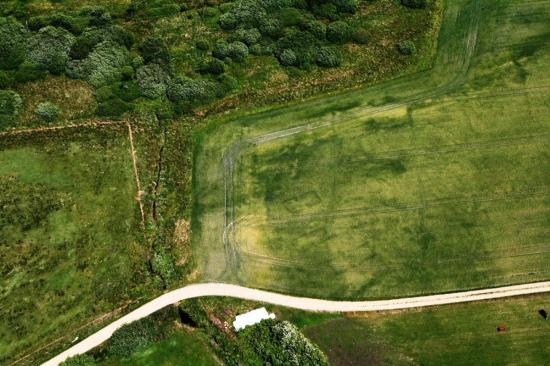
Vestiges of Early Iron Age remnant houses. At the beginning of the Iron Age, some 2,000 years ago, people lived in small houses 10-12 metres long. The east side of the house was always reserved for the animals. If you look closely, you may spot partitions in two of the houses. These partitions are rarely visible today because they were dug deep into the ground.
“The houses change appearance throughout antiquity, and archaeologists now have a good overview of how the houses have looked in various periods of history,” she says.
”The most characteristic ones are the remnant houses with curved walls from the Viking Age [picture 5]. The design allowed for a minimum of poles inside the house to hold the roof. This opened up for a big open space in the middle of the house, in which large groups of people could be brought together.”
One of the most common finds in aerial archaeology is 'pit houses' – labour huts from the Viking period (picture 3). They were dug no more than a metre down into the ground. This makes it very clear to see that the grains grow differently in these areas.
Old photos scrutinised
However, 'The past as viewed from the sky – air archaeology in Denmark' covers more than the flights, which only take place in the summer.
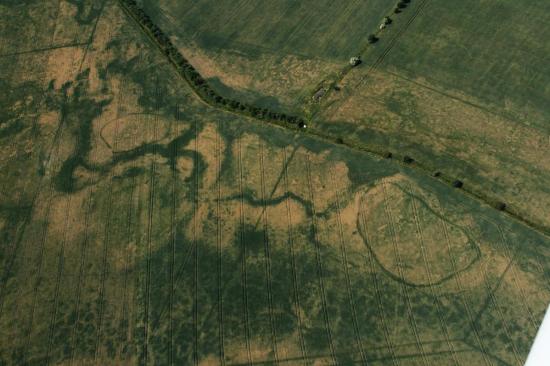
Vestiges of two enclosures, which may have surrounded remnant houses from the Iron Age. In the small enclosure, we see an entrance but we can only guess what it is that has been enclosed. All we can see are a few small pits. We know about enclosed farms and villages from the Iron Age, and this find could be a vestige of a deep trench for such an enclosure.
The researchers also put old photos under systematic scrutiny – as with, for instance, photos taken during World War 2 to map the land.
Facts
A pit house is a work hut from the Viking Age, which was used to e.g. forge and weave in.
Pit houses didn’t have room for much more than one man, and the roof was supported by two pillars on each side of the hut.
They were dug between a half and one meter down into the ground, which means they are relatively easy to see from the air even today.
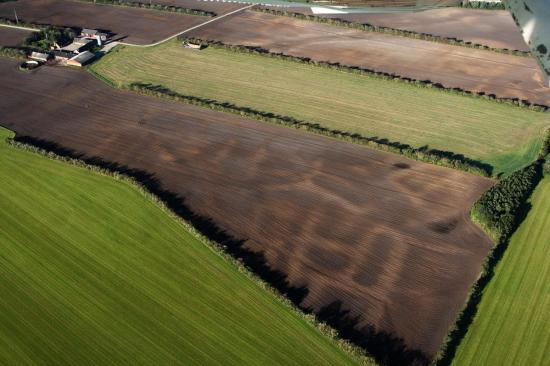
The bright stripes, which almost form a fluorescent grid pattern, are vestiges of embankments that surrounded small fields in the Early Iron Age, around 2,000 years ago. The embankments were built using a material that was different from the rest of the field, and sand has drifted over them.
Although the old photos are taken at a very long distance, they could well contain secrets from the past.
So far, the project has revealed more than 2,500 sites that may be of archaeological interest, and which could result in further funding for the project.
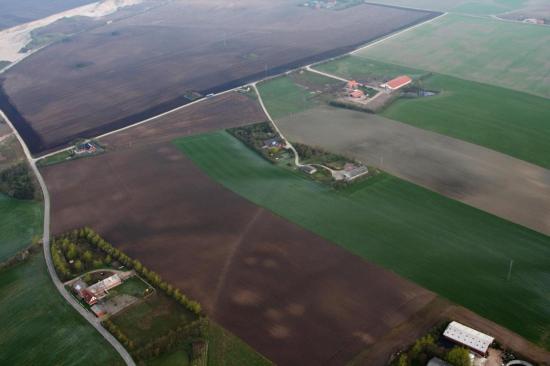
The round bright spots are traces of burial mounds, which have been ploughed and smoothed over centuries. Also pictured are a couple of preserved burial mounds. About a quarter of the mounds that once existed are preserved today. The number of burial mounds helps us form an idea of the population size in the Late Stone Age and the Early Bronze Age,
Olesen sincerely hopes the project can continue past its scheduled expiration in 2013.
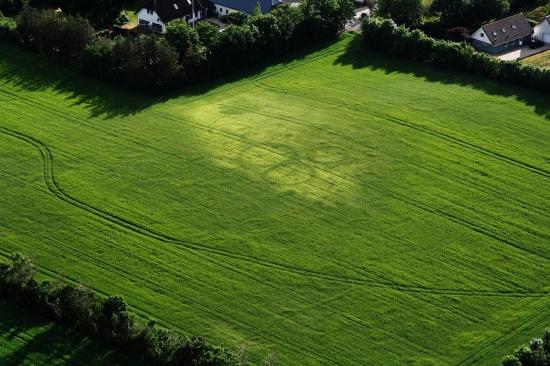
Vestiges of ring ditches which have encircled very small mounds in the Early Iron Age. If Iron Age people had not dug these ditches around the mounds where they buried their dead, we would have had no chance of finding these burial mounds.